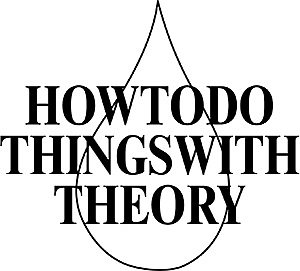Nika Timashkova: ...hhh// Sign Wars & Semiotic Fragility hhh \\...: Wearing the Ukrainian - Russian Conflict
Thesis Supervisor: Rachel O'Reilly
Thesis: ...hhh// Sign Wars & Semiotic Fragility hhh \\...: Wearing the Ukrainian-Russian Conflict
June 2017
Abstract
Contemporary civil wars as political-economic conflicts are increasingly mediated and take place through a wild and dense fair of symbols. In Ukraine1 and in Russia the process of national identity re-formation is happening on both sides in response to and mobilized by conflict. The current geopolitical conflict between Russia and Ukraine can be best understood in terms of land claims linked to ideology. In this process, symbols become key weapons: weapons of destruction and weapons of protection. Within the mythmaking process, old identity bodies are excavated and then reanimated in order to serve the contemporary political purpose. This particular tendency is nothing new — it is a process that lingers continuously within a nation. However, it accelerates prodigiously in a state of crisis. Symbols play a crucial role as anchor points in the national narrative and have an impact on the imagination of the citizens. After being detached from existent meanings they are re-negotiated. Imagined borders become digital borders, projected and materialized in a physical way. Materialized borders become concrete, in the sense of becoming tangible, but also as a process of transforming ideology into solid material.
This thesis moves within the temporal framework of the last four years of the Russian- Ukrainian conflict, starting the with the Maidan protests in 2013. In the following chapters I will examine how various historical narratives and symbols are connected to events within the current conflict between Russia and Ukraine and the processes of national identity reformation. Tracking resurgences of symbols through design and art, I ask how postcolonial theoretical attention to the spatial and temporal process of recombinatory and weaponized image-making might offer other ways of thinking about the relationship between historical memory and semiotic fragility outside of their crystallization as weapons of war in the public space and in individual bodies of work and artistic practice.
Can a non-linear and post-colonial composition of symbols, assumed as an aesthetic practice and labour of resistance, open up a gap for new identities beyond the nation-state in the context of the Russian-Ukrainian conflict? Could such symbolic units be assembled a parataxical way, but in an entangled way dissolving the boundaries between each? How would this non-violent appropriation of symbols look? How could it be legitimized? What is the difference between productive versus exploitative appropriation?
Author: Nika Timashkova


